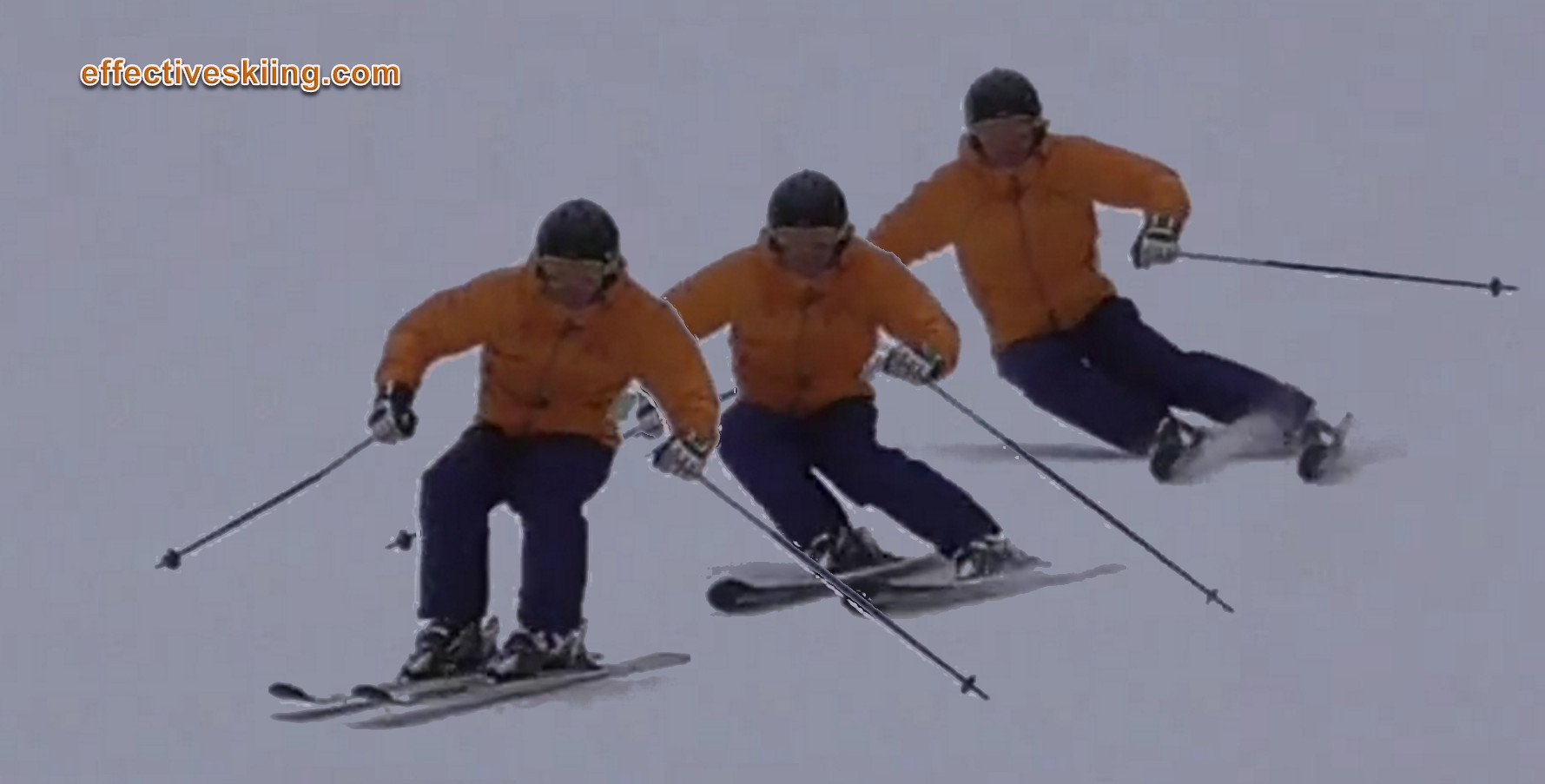Down-unweighting and Up-unweighting
Pub
Share
Two very different ways to unweight the skis, defined in terms of how the body's mass is impulsed: up or down.
Up-unweighting refers to "pushing" into the skis at the end of the turn, to throw the body "up" and take the weight/pressure off the skis that way while "down-unweighting" refers to an unweighting where the body is allowed to "fall" and the feet are relaxed/retracted instead, as below:
The unweighting of the skis was important with the older straight skis, which needed to be unweighted to be pivoted into the new turn. These days, althugh some still use the old "unweight and pivot" techniques, unweighting is generally used as a way to help release the edges and help initiate the new turn, and referred to as Extension release++ vs Flexed release.
One thing to pay attention to, when judging either is that, depending on the performance of the turn, the hips will generally rise no matter which is used, because the body keeps moving forward somewhat, while the skis follow the slope downwards - see more at the Retraction release.
So, when looking at a skier releasing, it is better to look for extending (longer) legs, or legs that stay the same, or legs that get short (flexing), to determine how the body is impulsed.
Performance skiing and releasing
In performance skiing, generally impulsing the body "up" is avoided - not only is there less control as the body is moving up and down, but we then have to wait for it to also come "down" and the retraction release is prefered:
There is a large spectrum of unweighting, between pushing hard on the skis at the end of the turn to throw the body upwards, versus a complete flexing and relaxing of the legs, to allow it to fall downwards.
Impulsing "up" may be not just a result of a forceful pushing to release but also the result of just waiting with a strong leg: as the skis come around the turn, the body will get a jolt up and it is the same end result as if we actively pushed.
You often see extreme cases of this long leg at the end of the turn and it's commonly referred to as "jamming" at the end of the turn, where the hips are blocked by the legs while the torso keeps moving down and the skier hunches forward.
See release and flexed release.
Sessions to work on this skill:
- Relax to transfer weight
- Flex to release
- Release untip to skis flat
- Recentering in fore-aft
- Increase range of flexing
- Flexing and extending
- Forward is down
Drills:
You need to log in to post a comment!

